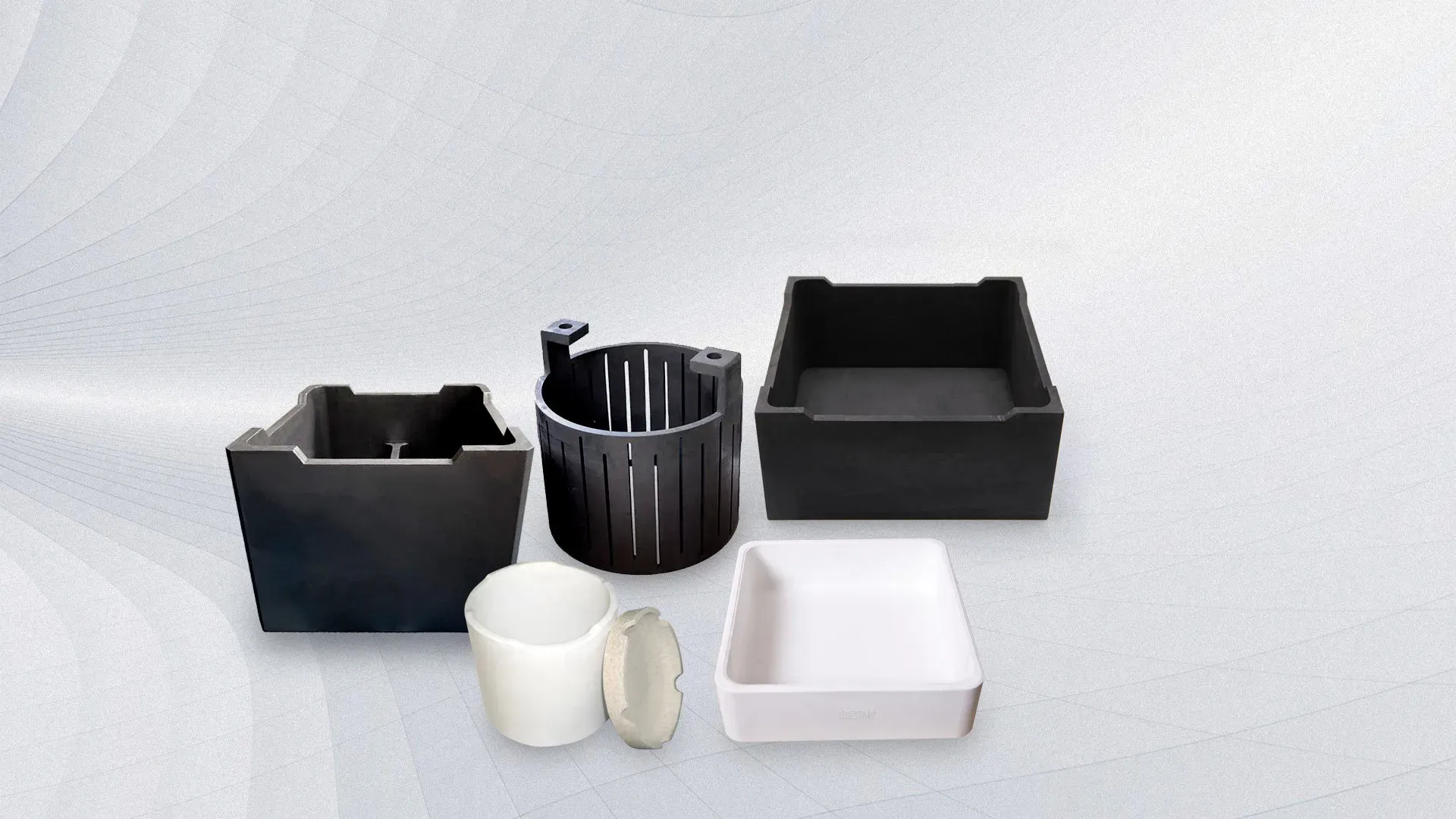Discover Premium Ceramic Products | Durability & Elegance United | Advanced Ceramics
1. Introduction
Just 24 hours ago, a major semiconductor foundry in South Korea announced it had slashed furnace downtime by 37%—all thanks to switching to high-purity silicon carbide crucibles. While the rest of us were doom-scrolling memes about burnt toast, engineers were quietly celebrating a materials science win. And honestly? It’s about time we talked about the unsung hero of extreme heat: the silicon carbide crucible.

Forget your grandma’s porcelain teacup. We’re diving into ceramics that laugh in the face of 1,600°C, resist thermal shock like a stoic monk, and somehow also show up as black ceramic dinner plates on Etsy. Buckle up—it’s hotter than a kiln in here.
2. Silicon Carbide Crucible: The Basics (But Make It Spicy)
A silicon carbide crucible isn’t just a fancy pot. It’s a high-performance vessel engineered from one of the hardest known materials—silicon carbide (SiC). Think of it as the titanium of ceramics: lightweight, tough, and unreasonably good at not melting.
These crucibles are sintered or reaction-bonded (more on that soon) to create a dense, thermally conductive structure that won’t crack when you yank it from a roaring furnace and dunk it in cold water. Yes, really.
3. Manufacturing Methods: Not All Silicon Carbide Crucibles Are Created Equal
3.1. Reaction-Bonded Silicon Carbide (RBSC)
RBSC crucibles start as a mix of silicon carbide powder and carbon. After shaping, they’re infiltrated with molten silicon, which reacts to form more SiC. The result? Near-net-shape parts with excellent strength and thermal shock resistance.
Bonus: RBSC is cost-effective for complex shapes—like those rbsic silicon carbide tile blocks used in kiln linings or even silicon carbide ceramic columns in filtration systems.

3.2. Sintered Silicon Carbide (SSiC)
SSiC skips the liquid silicon step. Instead, ultra-fine silicon carbide powder is pressed and sintered at extreme temperatures (often with sintering aids like boron or carbon). The payoff? Higher purity, better corrosion resistance, and smoother surfaces—ideal for crucibles handling reactive metals like titanium or rare earths.
Downside? It’s pricier and trickier to manufacture. But if your lab budget includes ‘artisanal argon,’ you’ll manage.
4. Silicon Carbide vs. The Competition
4.1. Boron Carbide vs Silicon Carbide
Boron carbide (B4C) is harder—technically. But it’s also brittle, expensive, and oxidizes faster above 500°C. Silicon carbide? Tougher, cheaper, and stable up to 1,600°C in air. For crucibles, SiC wins by a landslide.
4.2. Silicon Nitride: The Elegant Rival
Enter silicon nitride (Si3N4)—the ceramic equivalent of a tailored suit. It’s got superb thermal shock resistance and creep strength. Some even swear by silicon nitride crucible factories for molten aluminum handling.

But here’s the kicker: silicon nitride is harder to sinter and costs more. Plus, while you can find a custom silicon nitride heat shield for aerospace, good luck sourcing a silicon nitride ceramic baking dish. (Spoiler: it doesn’t exist. Yet.)
5. Beyond the Lab: When Silicon Carbide Goes Domestic
Yes, folks—silicon carbide isn’t just for smelting platinum. Thanks to its non-toxic, non-porous nature and sleek black or white finish, it’s creeping into kitchens as silicon carbide ceramic dinnerware.
- silicon carbide ceramic dinner plates that survive dishwasher wars
- silicon carbide ceramic casserole dish with lid for your Sunday roast
- silicon carbide ceramic butter dish with lid (because even your butter deserves armor)
- silicon carbide ceramic ramekins that double as paperweights
And don’t get us started on the silicon carbide baking dish staub knockoffs—some artisans are handcrafting silicon carbide ceramic baking trays that could probably double as spaceship hulls.
6. Industrial Cousins: Pipes, Discs, and More
The same material science magic powers other high-temp components:
- silicon carbide ceramic tubes for furnace thermocouple protection
- silicon carbide porous ceramic tube for filtration
- silicon carbide ceramic grinding disc for precision pottery work
- silicon carbide disc taps in plumbing (yes, your faucet might contain SiC!)
Even silicon carbide ceramic piping is gaining traction in corrosive chemical plants. Forget PVC—this stuff laughs at hydrofluoric acid.
7. The Purity Puzzle
Not all silicon carbide is equal. High-purity grades (>99.5% SiC) are essential for semiconductor and solar industries to avoid metal contamination. Meanwhile, lower grades work fine for silicon carbide brick linings or silicon carbide burner nozzles.
And while the high purity silicon nitride powder market heats up, SiC remains the more accessible, versatile option for most high-temp applications.
8. Conclusion
From molten metal crucibles to midnight-black dinner plates, silicon carbide proves that extreme performance and everyday elegance aren’t mutually exclusive. Whether you’re casting superalloys or serving pie in a silicon carbide ceramic pie dish, this ceramic delivers—without breaking a sweat (or a crack).
So next time someone says ‘ceramics are fragile,’ hand them a silicon carbide crucible… and maybe a silicon carbide ceramic salad bowl for good measure.
Our Website founded on October 17, 2012, is a high-tech enterprise committed to the research and development, production, processing, sales and technical services of ceramic relative materials such as Why. Our products includes but not limited to Boron Carbide Ceramic Products, Boron Nitride Ceramic Products, Silicon Carbide Ceramic Products, Silicon Nitride Ceramic Products, Zirconium Dioxide Ceramic Products, etc. If you are interested, please feel free to contact us.
